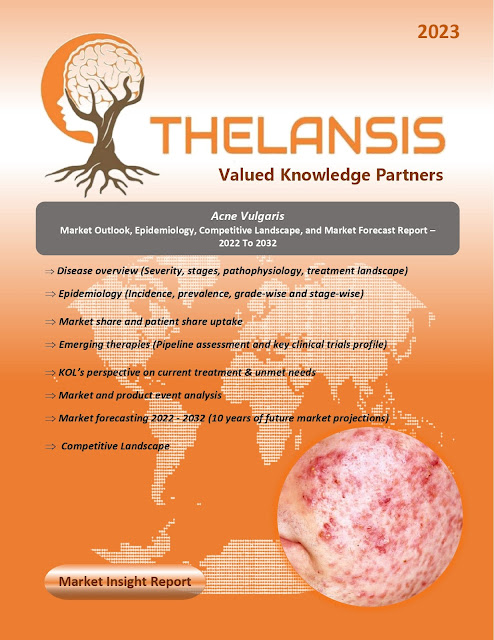Acanthamoeba Keratitis (AK) – Market Outlook, Epidemiology, Competitive Landscape, and Market Forecast Report – 2023 To 2033
Acanthamoeba keratitis (AK), a rare and challenging cornea infection to diagnose and treat effectively, is caused by various genotypes of the Acanthamoeba organism, classified as T1–T22 based on 18s rRNA gene typing. Clinical presentation and treatment response vary depending on the genotype. Transmission occurs through corneal contact with contaminated substances, with human cases often linked to tainted water, soil, or eye trauma. The disease progresses through two phases: an initial phase affecting only the corneal epithelium, followed by invasion into the underlying stroma, resulting in significant damage to the collagen matrix and triggering intense inflammation. AKANTIOR® (polihexanide), a novel anti-amoebic polymer, holds promise as the first approved drug for treating Acanthamoeba keratitis worldwide. Polihexanide targets both trophozoites and cysts of the Acanthamoeba protozoan.
·
The estimated incidence of Acanthamoeba
keratitis (AK) among soft contact lens wearers ranges from 4.5 to 7.8 cases per
100,000 population.
Thelansis’s
“Acanthamoeba Keratitis (AK) Market Outlook, Epidemiology, Competitive
Landscape, and Market Forecast Report – 2023 To 2033" covers disease
overview, epidemiology, drug utilization, prescription share analysis,
competitive landscape, clinical practice, regulatory landscape, patient share,
market uptake, market forecast, and key market insights under the potential Acanthamoeba
Keratitis (AK) treatment modalities options for eight major markets (USA,
Germany, France, Italy, Spain, UK, Japan, and China).
KOLs insights of Acanthamoeba
Keratitis (AK) across 8 MM market from the centre of Excellence/ Public/
Private hospitals participated in the study. Insights around current treatment
landscape, epidemiology, clinical characteristics, future treatment paradigm,
and Unmet needs.
Acanthamoeba
Keratitis (AK) Market Forecast Patient Based Forecast Model (MS.
Excel Based Automated Dashboard), which Data Inputs with sourcing, Market
Event, and Product Event, Country specific Forecast Model, Market uptake and
patient share uptake, Attribute Analysis, Analog Analysis, Disease burden, and
pricing scenario, Summary, and Insights.
Thelansis Competitive Intelligence (CI) practice
has been established based on a deep understanding of the pharma/biotech
business environment to provide an optimized support system to all levels of
the decision-making process. It enables business leaders in forward-thinking
and proactive decision-making. Thelansis supports scientific and commercial
teams in seamless CI support by creating an AI/ ML-based technology-driven
platform that manages the data flow from primary and secondary sources.
Tags: Acanthamoeba
Keratitis (AK), Acanthamoeba Keratitis (AK) market
outlook, Acanthamoeba Keratitis (AK) competitive
landscape, Acanthamoeba Keratitis (AK) market
forecast, Thelansis, Primary market research, KOL insights, Competitive
Intelligence (CI)




Comments
Post a Comment